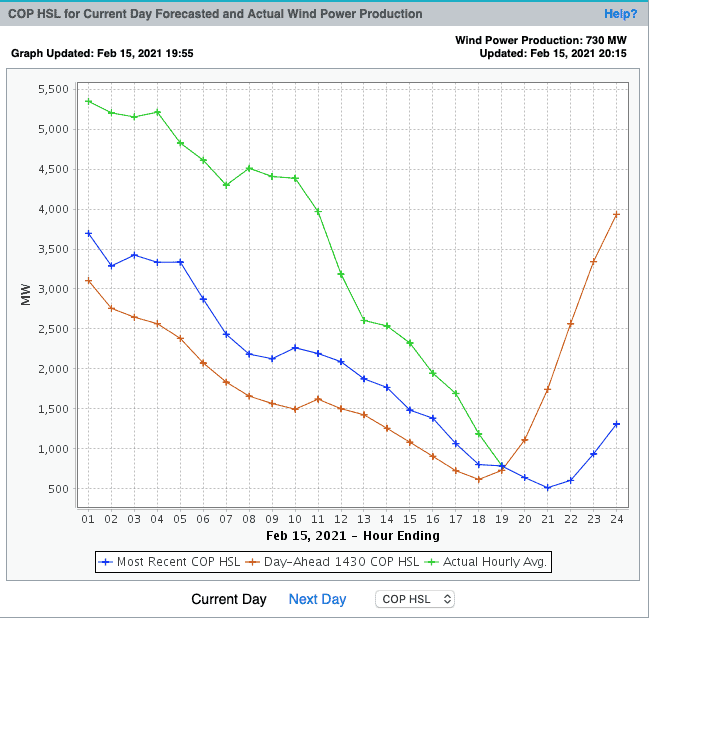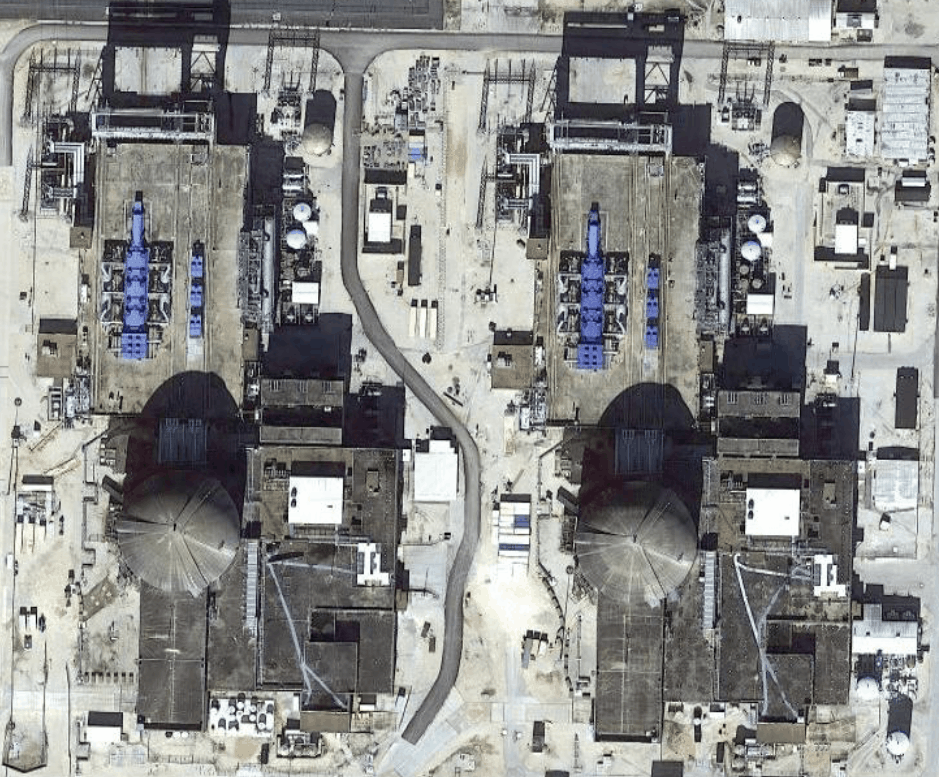South Texas Project Unit 1 tripped at 0537 on Feb 15, 2021
February 15, 2021 By Rod Adams 29 Comments
A series of winter storms and a blast of Arctic air has put most of the United States into a short term energy supply challenge.
Texas has been the epicenter of the winter event. Its electric power grid has been under an Emergency Energy Alert Stage 3 since the early morning hours of February 15. At that stage, reserve margins are so tight that the grid operator has issued orders to transmission companies to reduce loads on the system.
The transmission companies have few remaining tools available to keep the grid in balance and prevent widespread collapse. They have reached the response stage where they need to implement rotating outages. In some cases, the margin between reserve generating capacity and demand has been so tight that the rotating outages have been substantially longer than the typical planned duration of 15-45 minutes.
There are numerous contributing factors, including fuel-related outages at natural gas fired power stations, a lack of wind as the cold air settles in, freezing at some wind turbine generators, and challenges at coal plants.
Approximately 35 GWe of installed thermal generating capacity was not producing electricity for a significant portion of the day on Feb 15. As of this moment, 8:15 PM central time, there is no solar electricity being provided in Texas and its 30,000 MWe of installed wind turbines is generating just 800 MWe.

Note: The link to Ercot’s wind generation graph leads to a dynamically updated page, so the image here is for a specific moment in time.
In addition to those other electricity supply system issues, at 0537 central time, there was an unscheduled trip at South Texas Project Unit 1. That nuclear generating plant usually produces 1350 MW of electricity.
Vicki Rowland, the lead for Internal Communications at the STP Nuclear Operating Company provided the following narrative about the unit’s operating status.
On Monday, Feb. 15, 2021, at 0537, an automatic reactor trip occurred at South Texas Project in Unit 1. The trip resulted from a loss of feedwater attributed to a cold weather-related failure of a pressure sensing lines to the feedwater pumps, causing a false signal, which in turn, caused the feedwater pump to trip. This event occurred in the secondary side of the plant (non-nuclear part of the unit). The reactor trip was a result of the feedwater pump trips. The primary side of the plant (nuclear side) is safe and secured.
STP values safety over production, so our first priority is the safety of our teammates, especially regarding the freezing weather and road conditions.
Secondarily our priority is the operating unit. Unit 2 is operating at 100 percent power. We evaluated Unit 2 and have confirmed that we do not have the same issues that caused the feedwater pump trips in Unit 1.
STP crew members are safely working to promptly return Unit 1 to the grid. We are validating the issues that caused the feedwater pumps to trip and will take the necessary actions to prevent reoccurrence.
STP has operated very reliably with only two reactor trips in the past several years. On May 1, 2016, the South Texas Project Unit 1 automatic reactor trip due to a main generator lock. Prior to that on Jan. 8, 2013, Unit 2 experienced an automatic reactor trip from full power caused by a main transformer fire.
If you have any questions, please contact me directly.
Update: (Feb 16, 2021 1345) Some people have wondered how “pressure sensing lines” for a feed water pump could have been affected by cold outside air temperatures. There are no turbine halls at STP, both of steam turbines are out in the open air. I’m sure there is a design reason for this choice, but it isn’t apparent. Here is a satellite photo of the site from Google Maps. End Update

I respect nuclear plant operators and believe in the importance of the industry’s safety culture.
But, I hope that this event becomes a topic of discussion about the balance between operating – or not operating – nuclear plants with the utmost caution and the occasional need to recognize the life-sustaining nature of reliable electricity.
The submarine force has protocols in place that recognize the need to balance safety of the nuclear propulsion plant with the safety of the ship that it propels. During my tour as Engineer Officer I ensured that my crew knew that a perfectly safe reactor at the bottom of the ocean in a sunk ship is not perfectly safe.
Though the Texas grid is not going to sink into the ocean, there is a point at which an over abundance of caution can turn into a harmful course of action.
About Rod Adams
Rod Adams is an atomic energy expert with small nuclear plant operating and design experience, now serving as a Managing Partner at Nucleation Capital, an emerging climate-focused fund. Rod, a former submarine Engineer Officer and founder of Adams Atomic Engines, Inc., one of the earliest advanced nuclear ventures, has engaged in technical, strategic, political, historic and financial discussion and analysis of the nuclear industry, its technology and policies for several decades. He is the founder of Atomic Insights and host and producer of The Atomic Show Podcast.
Please click here to subscribe to the Atomic Show RSS feed.
Reader Interactions
